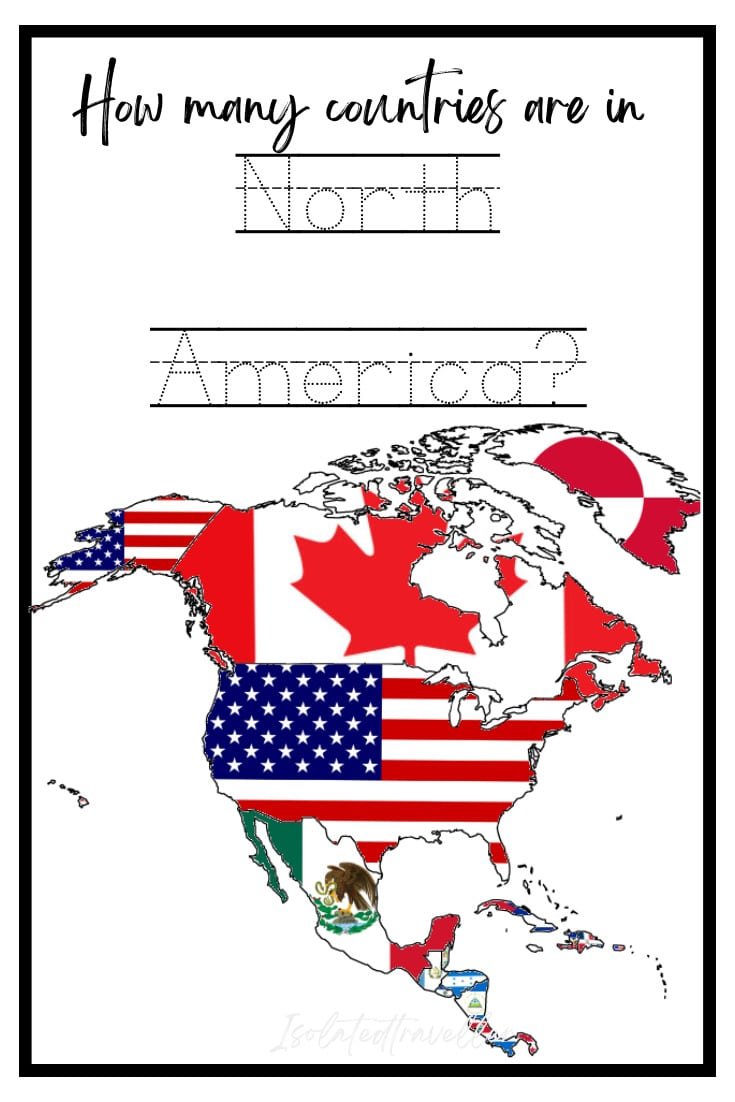How many countries are in North America?
There are 23 countries in North America, depending on how the region is defined. North America is a continent located in the northern hemisphere, between the Atlantic and Pacific Oceans. It is typically defined to include the countries of Mexico, the United States, and Canada, as well as the Central American and Caribbean nations.
If you include the dependent territories and overseas territories of other countries, the number of entities in North America increases. Dependent territories are territories that are not fully independent countries but are under the jurisdiction of another country. Overseas territories are territories that are external to the country they are associated with and are usually located on other continents. Some examples of dependent and overseas territories in North America are Puerto Rico, a territory of the United States, Bermuda, a British Overseas Territory, and Greenland, a territory of Denmark.
North America is the third largest continent in the world by area. It is bounded by the Arctic Ocean, the Atlantic Ocean to the east and the Pacific Ocean to the west and south.
North America is the third largest continent, covering approximately 4.8% of the earth’s total surface area and 4.1% of its total population. It is bounded by the Arctic Ocean, the Atlantic Ocean in the east and the Pacific Ocean in the west and south. The land area of this continent is about 24,709,000 km2 or 9,540,000 square miles.
North America consists of 23 independent countries
North America consists of 23 independent countries and territories including:
- United States
- Mexico
- Canada
- Guatemala
- Haiti
- Dominican Republic
- Cuba
- Honduras
- Nicaragua
- El Salvador
- Costa Rica
- Panama
- Jamaica
- Trinidad And Tobago
- Bahamas
- Belize
- Barbados
- Saint Lucia
- Grenada
- Saint Vincent And the Grenadines
- Antigua And Barbuda
- Dominica
- Saint Kitts And Nevis
List of Countries and Territories in North America
| Rank | Country | 2022 Population |
| 1 | United States | 338,289,857 |
| 2 | Mexico | 127,504,125 |
| 3 | Canada | 38,454,327 |
| 4 | Guatemala | 17,843,908 |
| 5 | Haiti | 11,584,996 |
| 6 | Dominican Republic | 11,228,821 |
| 7 | Cuba | 11,212,191 |
| 8 | Honduras | 10,432,860 |
| 9 | Nicaragua | 6,948,392 |
| 10 | El Salvador | 6,336,392 |
| 11 | Costa Rica | 5,180,829 |
| 12 | Panama | 4,408,581 |
| 13 | Jamaica | 2,827,377 |
| 14 | Trinidad And Tobago | 1,531,044 |
| 15 | Bahamas | 409,984 |
| 16 | Belize | 405,272 |
| 17 | Barbados | 281,635 |
| 18 | Saint Lucia | 179,857 |
| 19 | Grenada | 125,438 |
| 20 | Saint Vincent And the Grenadines | 103,948 |
| 21 | Antigua And Barbuda | 93,763 |
| 22 | Dominica | 72,737 |
| 23 | Saint Kitts And Nevis | 47,657 |
Dependent Territories in North America
There are several dependent territories in North America, which are territories that are not fully independent countries but are under the jurisdiction of another country. Some examples of dependent territories in North America are:
Danish Territories
- Greenland
British Territories
There are several British Overseas Territories in North America, which are territories that are external to the United Kingdom but are under the jurisdiction and sovereignty of the UK. Some examples of British Overseas Territories in North America are:
- Anguilla
- Bermuda
- The British Virgin Islands
- Cayman Islands
- Montserrat
- Turks and Caicos
United States Territories
There are several territories of the United States in North America, which are areas that are not fully independent countries but are under the jurisdiction and sovereignty of the United States. Some examples of territories of the United States in North America are:
- Puerto Rico
- US Virgin Islands
Dutch Territories
- Bonaire
- Saba
- Sint Eustatius
French Territories
- Clipperton Island
- Guadeloupe
- Martinique
- Saint Barthelemy
- Saint Martin
- Saint Pierre and Miquelon
North America Geography
The mainland of North America is characterized by a wide range of landscapes, including mountains, forests, deserts, grasslands, and tundra. The Rocky Mountains, the Appalachian Mountains, and the Cordillera mountain ranges run through the continent, while the Great Plains and the Canadian Shield are large areas of flat or rolling terrain. The continent also has several major rivers, including the Mississippi, Missouri, Rio Grande, and St. Lawrence.
North America has a varied climate, with hot, humid summers and cold winters in the central and eastern regions, and a more arid climate in the western and southern regions. The continent is also home to a diverse array of flora and fauna, including many species of trees, plants, birds, and animals that are found nowhere else in the world.


